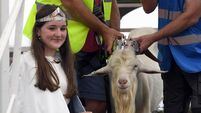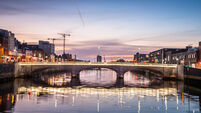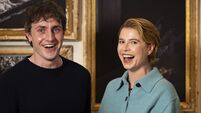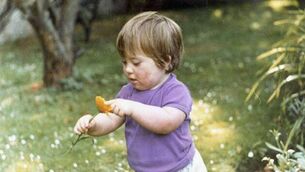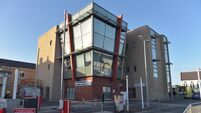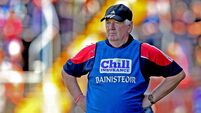Michael Moynihan: A whole new way to experience Cork City
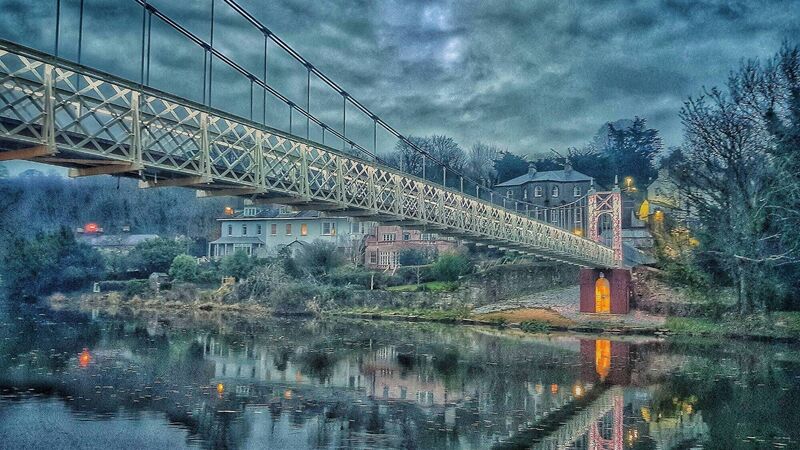
Stephanie O'Connor, from Gurranabraher, took this stunning photo of the Shakey Bridge in Cork City.
When I think of Cork writers, I go back a few decades — back to sitting in sixth class in the North Mon primary, where Donal Hurley, one of the greatest in a school of great teachers, was giving us a lesson.
“Has anyone here ever heard of Frank O’Connor?”
No hands stirred.
“Famous all over the world,” said Donal. “Famous everywhere, in fact, apart from room 302 in the North Mon.”
Fair comment.
He taught us about O’Connor and how O’Connor wasn’t just from Cork, but had come to our school, sketching the writer’s route in our minds down past the barracks, the Fever Hospital steps, and maybe up Peacock Lane to the Mon itself.
We didn’t appreciate at the time that that linked us, inky wretches that we were, with magazine and Stanford University, two institutions O’Connor called home. The appreciation came later.
Why the nostalgia?
Blame the conversation I had with Deirdre Breen, the Cork artist involved with the A City & A Garden project.
“Think of it as a sonic experience through Cork City, and the Botanic Gardens in Dublin as well,” she told me.
“Two writers have written pieces based in Cork City, two have written stories based in the Botanic Gardens and, using your smartphone, you can go out and experience the story in the places they’re written about.”
Along the route are QR codes to scan along the way, which bring up parts of the stories you can hear on your phone.
“Along with the stories [written for the Cork section by Lisa McInerney and Louise Hegarty], musicians have been commissioned for soundscapes and songs informed and inspired by the stories, which brings a gorgeous layering of the different types of art,” Breen added.
“I read the stories initially, then I heard the narration — by the likes of Hilary Rose and Conor Lovett — and then the music comes in, so there’s something new every time you experience it.
“What these stories do is they bring the place you’re visiting to life — they shine a light on those places in terms of the people there or the activities going on there.”
Breen’s role was to create a “series of visual interventions and installations along the way, maybe landmarks or sentiments from the stories that are grounded in the places, which helps bring it more to life".
“You’re imagining how someone experiences the story and, while you want to pepper that with elements which enhance the story, you need to allow people the room needed to digest the story as well.
“That was something I was conscious of, as well as the simple fact that the locations are so different.”
One route goes from the Shakey Bridge to Red Abbey Square, while the other is from near the skate park on the Mardyke to Bell’s Field.
“When I did those routes myself, I went up through Shandon on the way to Bell’s Field,” she said.
“I hadn’t been up there in so long that it made me appreciative of the city, how lovely it is up there. It’s a really interesting part of the city — the Butter Museum, Shandon itself, the different traders, the artists — it was great to revisit it.
“And when you come down to Blackpool to head up to Bell’s Field, you go up those steps, which I never realised were called the Fever Hospital steps. Louise [McInerney, the author] was talking about that part of the route and it was so interesting to learn about it.”
And there you have a connection. A hundred years after O’Connor trudged his way to school, his route is part of a new story about the city he immortalised.
That wasn’t the end of our chat, mind. An initiative such as A City & A Garden is obviously boosted by our recent experience of the city and how the emptiness enforced by the pandemic has pushed all of us to see our surroundings anew.
“The lockdown’s changed how we view the places we live and work,” Breen said.
“That ties in with this project, because one of the stories looks at the history of Cork and the changes in Cork, so in that sense it’s perfect because we may be in that moment when a sense of transformation may be possible for the city.
“I found in lockdown that I was walking around the city when it was really quiet and I found myself looking up at buildings I hadn’t noticed before, buildings I didn’t really appreciate.
“For instance, I’m interested in the industrial heritage of Cork and the buildings associated with that. It’s struck me recently that we almost have mixed-use spaces now that we didn’t have before lockdown, which is something you’d see in mainland Europe, but which we might now be realising is potentially available to us here now also.
“That’d be incredible. What I find sad sometimes is you’ll find places that are strictly shopping or strictly residential, whereas what makes a city great, for me, is having mixed-use spaces — people living, working, socialising, exercising in those spaces.”
I couldn’t agree more. In recent weeks quite a few of the pieces here have touched on that awareness of the need to create a community and not a cityscape: a neighbourhood, not a zone.
One of the key elements is a diversity of use, as identified by Breen in our conversation. Discrete quarters catering for specific activities isn’t helpful in building coherent communities.
What about diversity of users, though?
A stroll through Cork on Tuesday, when the accoutrements of the open-air summer ahead were truly on show, indicated a tricky few months ahead for some of our citizens.
(This has nothing to do with the A City & A Garden project, by the way, which I’m looking forward to immensely. It has everything to do with my easily distractible brain.)
Along with everyone else, I welcome the return of the hospitality industry, a sector that has suffered hugely because of the pandemic.
However, there are now parts of the city that are downright impossible to traverse for those in wheelchairs, with a visual impairment, or pushing prams and buggies.
The proliferation of benches, tables, chairs, and stools on footpaths and at street corners presents real hazards to many people as they negotiate the city — people whose particular needs weren’t always accommodated to begin with.
I presume they were consulted beforehand about the considerable inconvenience being presented by these on-street innovations, with resources provided for alternative routes or rights of way.
No doubt there are people rolling their eyes at this and wondering if there’s anything they can be left to enjoy at this stage because there’s always some buck getting up on his high horse for the love of God almighty etc etc.
To which I can only say: think about those you share the city with. O’Connor’s ghost on the Fever Hospital steps. Lisa McInerney’s characters hustling past Shandon. Ordinary people defeated by crowded footpaths in the centre of town.
- For more: instagram.com/deirdrebreen/acityandagarden.ie, June 11 to 20.



